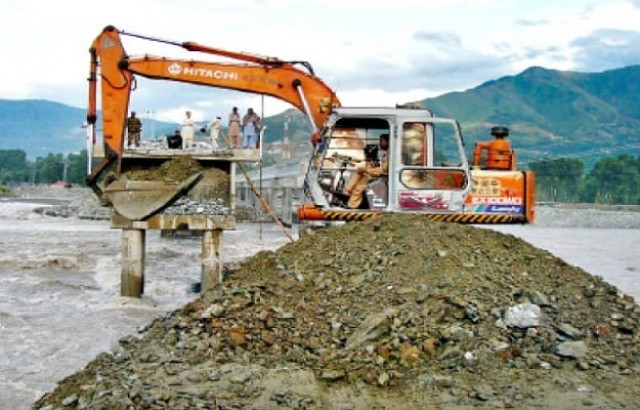Environmental impact: Heatwave brings threat of flash floods, wildfire
Climate cell says low risk of severe heatstroke in current temperature

Climate cell says low risk of severe heatstroke in current temperature. PHOTO: ONLINE
The Khyber-Pakhtunkhwa Climate Change Cell of the Environment Protection Agency (EPA) said on Monday people in the province were safe from severe heatstroke. However, officials warned if temperatures continued to rise, wildfires could erupt in dry grassy areas, and the threat of flash floods also loomed large.
“We know climate change is a reality,” said the cell’s deputy director Afsar Khan. “It can result in floods similar to the one in Upper Dir on June 21.”
Heat threat
However, he said heatstroke was less of a risk. “We have maintained a green belt. Also, there are no real high-rise buildings to trap the heat and stop the entry of fresh air,” said Asfar. The environment official said metropolitan cities become an urban heat island as they are home to high-rise buildings and lack green belts.

“K-P is more prone to flash floods and there is a contingency plan to cope with them,” he said.
Asfar said if the temperature hit 48 degrees Celsius, wildfires were expected in areas of Kohat and Karak where there is an abundance of dry grass.
The increase in temperature has been attributed to rising population, lack of garbage disposal facilities and greenhouse gas (GHG) emissions by factories. A combination of these factors makes the province vulnerable to climatic changes. There have also been erratic rain patterns which mostly result in floods.
Emissions
“Our GHG emissions are less than one tonne per capita per year,“ said Afsar. “It would become alarming only if that figure reached four tonnes. Asfar said the cell failed to understand the basis on which the World Health Organization declared Peshawar as the sixth most polluted city in the world. He said the EPA’s climate change policy would be ready by 2016 under which they would address all related issues.
He reiterated the increase in heat was due to pollution caused by traffic density, urbanisation and industrialisation. This he said was despite the existence of laws that regulate vehicular, industrial and brick kiln emissions as well as the burning of solid and domestic waste. He added poorly-maintained vehicles only exacerbated the situation.

“The EPA has teams to keep an eye on the situation and there are hundreds of cases pending in environmental tribunals,” said an official of the EPA. “Though the waste collection system has improved to some extent, waste management is inadequate and this causes a host of pollutants to be emitted in the air.”
He said the average emission of sulfur dioxide increased by 23 times over the last 20 years.
Published in The Express Tribune, July 7th, 2015.













COMMENTS
Comments are moderated and generally will be posted if they are on-topic and not abusive.
For more information, please see our Comments FAQ